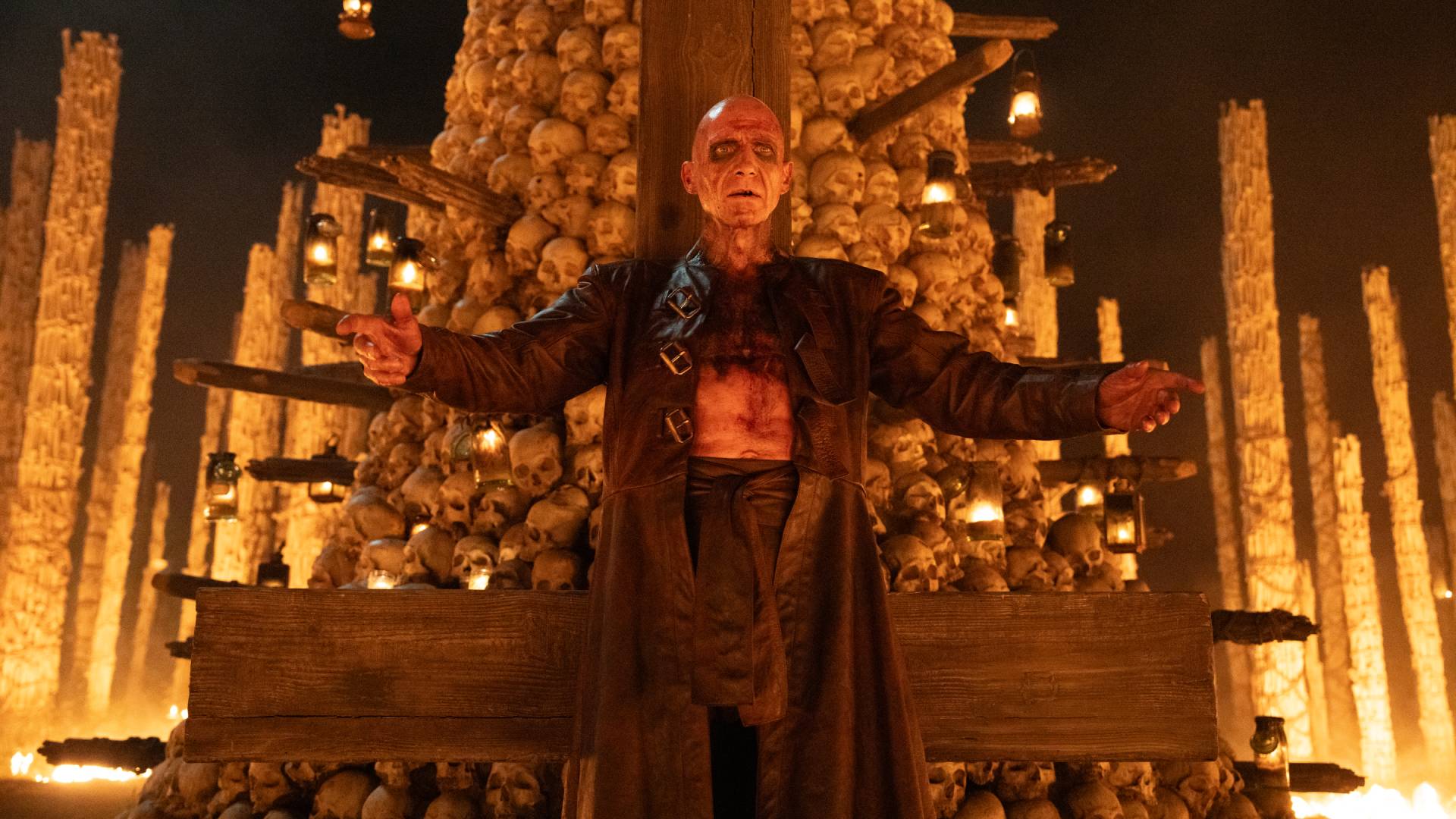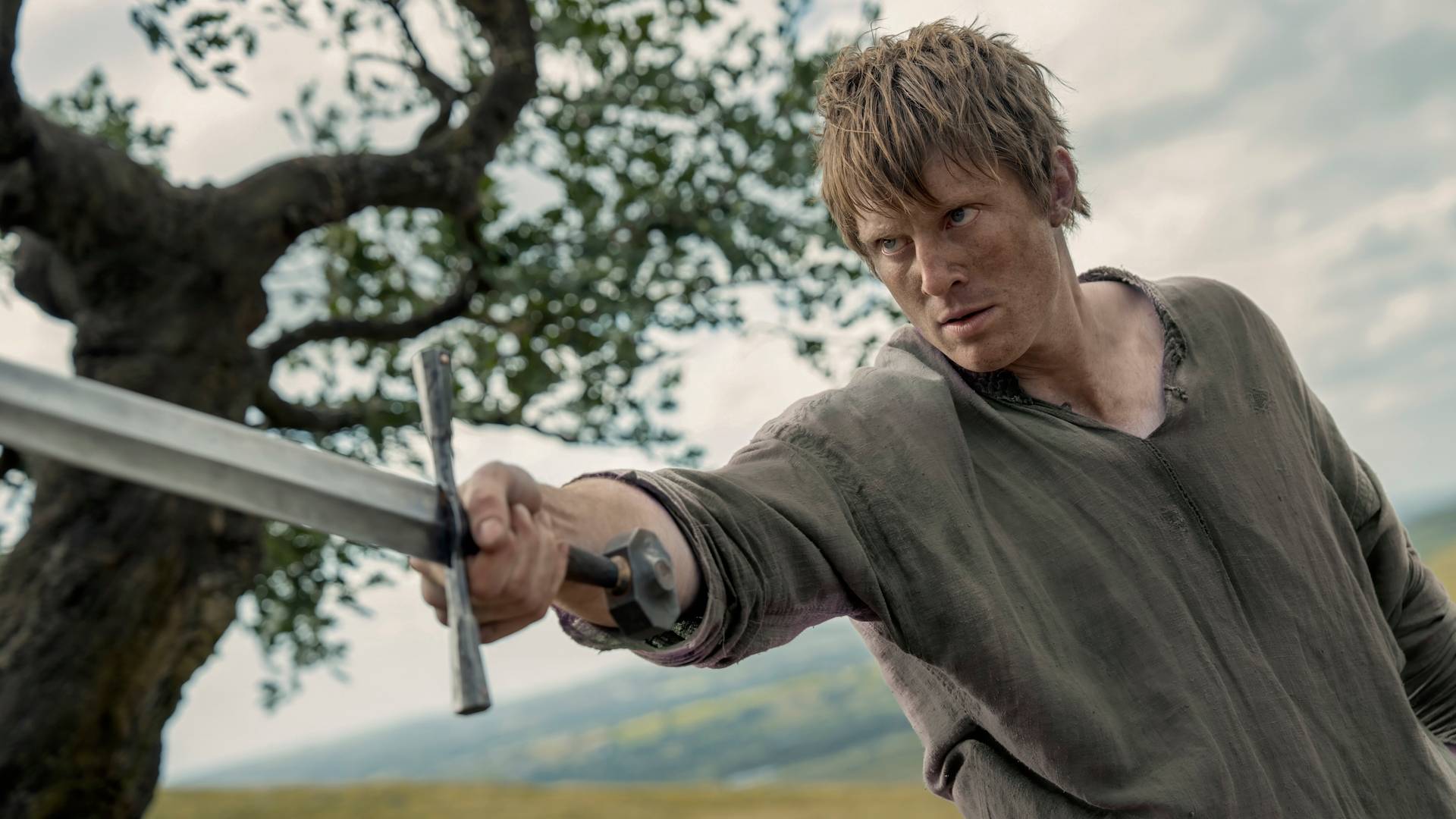GamesRadar+ Verdict
It might not have the Best Game Of All Time credentials of Ocarina of Time, but Majora’s Mask is still one of the most incredible adventure games ever made.
Pros
- +
The chance to relive the Ocarina of Time glory days
- +
The disconcertingly creepy tone
- +
Nintendo at its most creatively free
Cons
- -
Not having it on a full-size screen
- -
Save points limited by having to find statues to save at
- -
All the sidequests if you dont like sidequests
Why you can trust GamesRadar+
Majora's Mask - a game that turns 15 years old in 2015 - is an anomaly in the Zelda corpus. Taking just 18 months to develop and reusing a huge chunk of its predecessor, Ocarina of Time's assets, the game is a mad premise to begin with. A three-day cycle, repeated over and over until ended for good, in which the grimacing moon looms down over a small town and the only solution is a bunch of eerie masks with magical powers.
If insanely short deadlines and corner-cutting can foster the kind of creative thinking that allows games like Majora's Mask to exist, then count me in. The game's necessary reuse of assets makes for an unsettling, creepy game that constantly subverts your expectations, seeming familiar to those who played Ocarina of Time but never quite fitting into place as it should.
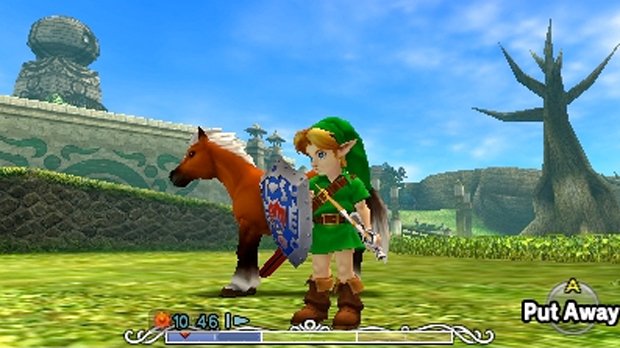
Everything in the game seems calculated to put you just that little bit on edge. The constant countdown on screen, the ever-so-slight musical dissonance of the ocarina songs, and the Groundhog Day-style time loop provide the background to an experience that feels familiar because of its similarity to Ocarina of Time, but never quite behaves how you expect it to.
Why does the music speed up every consecutive day? Why are these masks the solution, and not Link's normal problem-solving tactic of hitting things with a sword until they stop being evil? We became used to the tropes set up by Zelda games of the past - the story of a typical, sword-wielding hero and his quest to save the girl - and Majora's Mask came at just the right time to take everyone by surprise with its refusal to conform. Now, 15 years later, the market is saturated with 'weird' games, albeit mostly indies rather than AAA games too afraid to take a risk, yet Majora’s Mask remains as fresh and wonderful as it ever was.

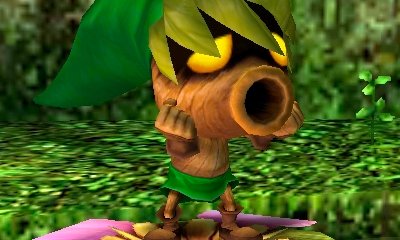
But which mask is best? That’s a toughie, but there are a handful of masks you’ll find yourself going back to time and time again. The Bunny Hood - which increases your speed by 68% - is great for dashing around without a horse, the Stone Mask makes you invisible to friends and foes alike and Kamaro’s Mask gives you the ability to do a sexy wiggle dance.
Originally titled Zelda: Gaiden - translated as Zelda: Side Story - Majora's Mask doesn't rely on the majority of its quests being the typical adventure game fare of dungeon-trawling, key-getting and boss-beating - though there is still a bit of that - instead, most of what you'll be doing to progress the story involves getting your hands dirty by solving problems and completing what might be viewed in any other game as side-quests.
Whether it's something as simple as healing the hurts of people trapped by their own sorrow, or as complicated as reuniting a scattered, cursed frog choir, the side-quests are always fascinating snippets into a mere three days of someone else's life. So rarely in games, then or now, do you learn such empathy so perfectly and concisely conveyed.
On the whole, Majora's Mask's dungeons aren't quite as well-crafted as those of its predecessor, and its enemies rarely reach the difficulty of a really tough Zelda boss, becoming pretty much a cakewalk if you've got the right masks. But the game is less about a grandiose princess-rescuing story arc and more about the sum of the small, intimate moments that shine, like following the notoriously tricky Anju and Kafei sidequest and unravelling a story that's masterfully, quietly brilliant, revealing the lives of NPCs that go on in the background as you quest your way through the three-day cycle. You could ignore them and stick to your mission, but their stories happen with or without your involvement.
Weekly digests, tales from the communities you love, and more

That's not to say there aren't moments of brilliance in the more traditional parts: Stone Tower Temple in particular stands out as an exceptionally smart piece of level design, requiring every power and ability learned in the game as well as mastery of a horrifically confusing but necessary mechanic that inverts the entire temple.
In terms of what's new to the remastered version, it's similar to the port of Ocarina of Time for the 3DS: items are easily accessed on the bottom screen and can be equipped to quick-select buttons, the graphics have been vastly improved, with sharper, richer colors and greater detail all over. Specific to Majora's Mask is an overhaul of the Bomber's Notebook, an incredibly useful reference point for keeping track of the game's convoluted side-quests and stories, as well as the ability to set alarms for certain events so you don't end up missing them and having to restart the three-day cycle.
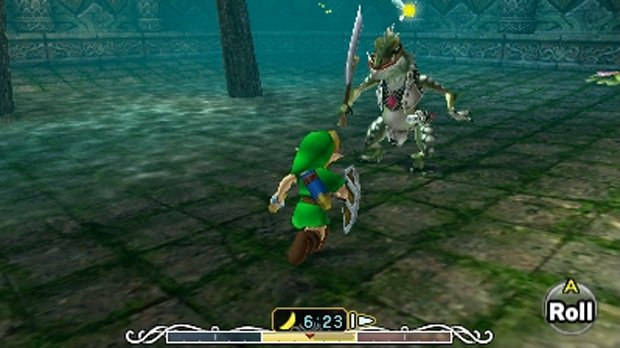
The 3D is excellent, and is subtle without being gratuitous. The camera can be controlled with a circle pad pro - or the New 3DS’ second analogue - but even without, it's a fairly intuitive third-person view without too many problems, though one-on-one boss battles in tight spaces can be a bit of a nightmare. I did find a couple of issues - a bit of clipping here and there, an overactive fairy that hovered over characters during cutscenes, and a strange lighting issue that casts huge, circular shadows and cranks the brightness up whenever the fairy is out. That last one seems to have been fixed, but without being entirely sure what caused it in the first place, it's unclear whether it will return.
Majora's Mask is still as much of a joy to experience as it was a decade and a half ago. Play it for the fancy graphics, the lighting, and the added portability if you want, but just make sure you play it. At first glance a sort-of sequel to Ocarina of Time that's long been seen as the quirky younger sibling that's not to everyone's taste, Majora's Mask blossoms into a sweet, scary, timeless tale that's a showcase of Nintendo's brand of creative genius at its most unconstrained. It might only be a remake - but it's only a remake of one of the most interesting, experimental games of its time.

More info
| Genre | Role Playing |
| Description | The N64 classic returns in three dimensions. |
| Platform | "3DS" |
| US censor rating | "Rating Pending" |
| UK censor rating | "" |

Kate Gray is an award-winning writer with over a decade of experience in games journalism. Kate has bylines on a variety of websites which include GamesRadar+, The Guardian, Buzzfeed, Kotaku, Vice, Rock Paper Shotgun, and others. Kate is now writing the good words over at Nintendo Life, and can still be found tweeting about nice things and taking lots of photos of food.


